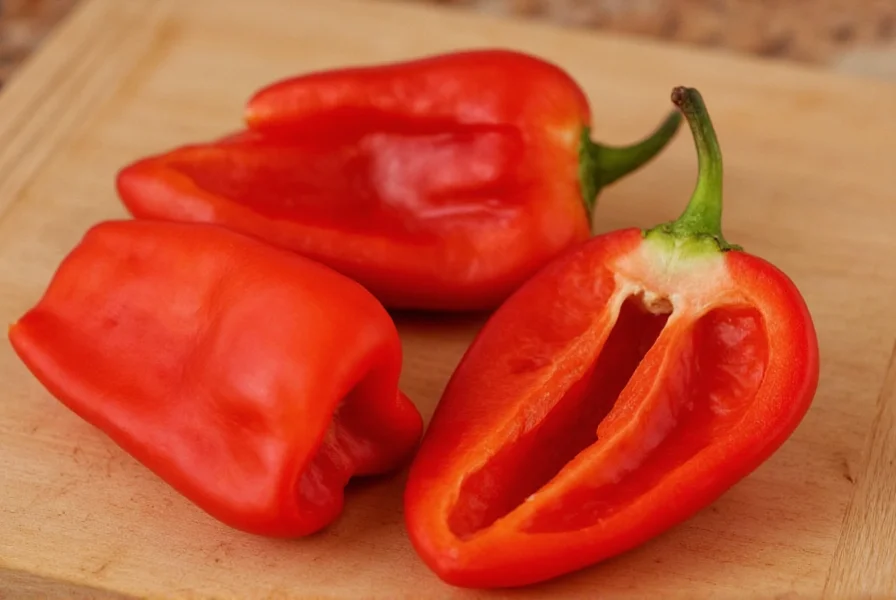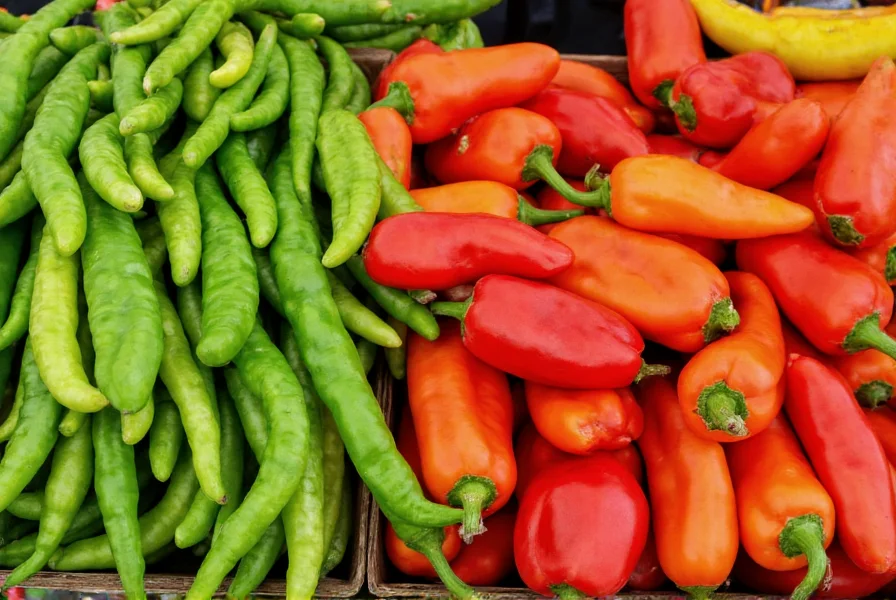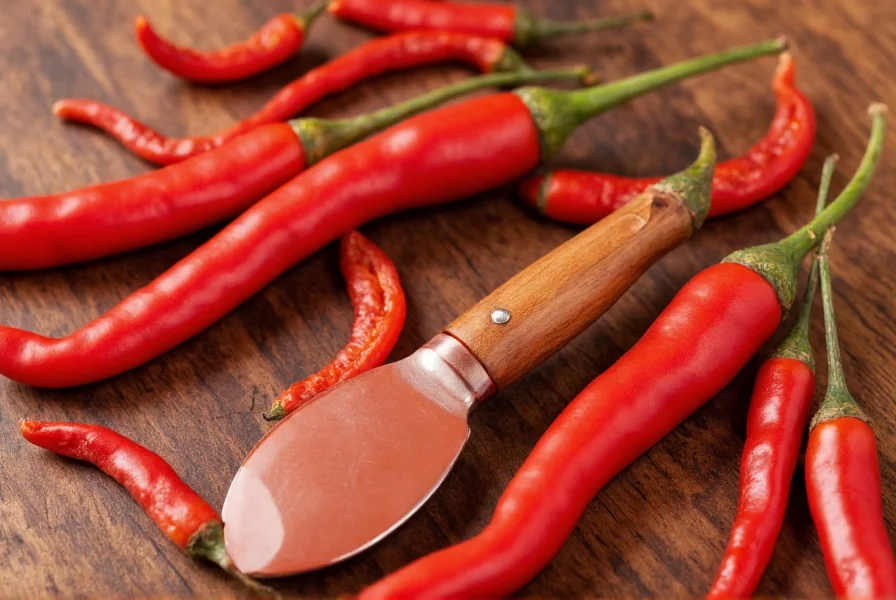When exploring unique pepper varieties for your kitchen, the flat iron pepper stands out as a specialty ingredient gaining popularity among home cooks and professional chefs alike. This distinctive pepper variety offers characteristics that differentiate it from more common options like bell peppers or cubanelles, providing specific advantages for certain culinary applications.
Physical Characteristics of Flat Iron Peppers
Flat iron peppers earn their name from their distinctive shape—broad, flat triangular sections that resemble an antique flat iron. These peppers typically measure 3-4 inches in length with a width of 2-3 inches at their widest point. Their walls are notably thinner than bell peppers, usually ranging from 1/8 to 1/4 inch thick, which contributes to their superior texture retention during cooking.
The color progression follows a similar pattern to bell peppers, starting green and maturing to vibrant red, yellow, or orange depending on the specific variety. The interior contains fewer seeds and less pith than standard bell peppers, making them easier to prepare with minimal waste. This characteristic makes flat iron peppers particularly valuable when searching for peppers with minimal seeds for salads or delicate preparations.

Flavor Profile and Heat Level Comparison
Understanding the flat iron pepper taste characteristics is essential for proper culinary application. These peppers deliver a clean, sweet flavor with subtle earthy undertones that lack the sometimes bitter notes found in certain bell pepper varieties. Their sugar content typically ranges from 4-6 Brix, placing them in the sweet pepper category without any noticeable heat—registering 0 on the Scoville scale.
| Pepper Variety | Wall Thickness | Heat Level (Scoville) | Sweetness (Brix) | Best Culinary Uses |
|---|---|---|---|---|
| Flat Iron Pepper | Thin (1/8-1/4") | 0 | 4-6 | Raw applications, quick sautéing, stuffing |
| Bell Pepper | Thick (1/4-3/8") | 0 | 3-5 | Roasting, grilling, stuffed dishes |
| Cubanelle | Moderate (3/16-1/4") | 0-1,000 | 5-7 | Frying, sandwiches, Italian dishes |
| Poblano | Thick (1/4-3/8") | 1,000-2,000 | 2-4 | Chiles Rellenos, sauces, roasting |
Culinary Applications and Cooking Techniques
The structural properties of flat iron peppers make them particularly well-suited for specific cooking methods. Their thin walls and minimal internal structure allow them to cook more quickly than bell peppers while maintaining better texture integrity. When searching for best peppers for stir-fry without becoming mushy, flat iron peppers consistently outperform standard bell peppers.
Chefs particularly value flat iron peppers for:
- Raw applications - Their crisp texture holds up well in salads and crudités without becoming waterlogged
- Quick sautéing - Cooks in 3-5 minutes while maintaining shape, ideal for fajitas and pepper mixes
- Stuffing - The flat shape creates perfect individual portions for stuffed pepper dishes
- Grilling - Maintains structure better than bell peppers at high temperatures
When substituting flat iron peppers in recipes calling for bell peppers, reduce cooking time by 25-30% to prevent overcooking. This adjustment proves crucial when following recipes requiring crisp-tender pepper texture, as the thinner walls require less time to reach optimal doneness.
Availability and Selection Tips
Finding flat iron peppers requires knowing where to look, as they're not as universally available as standard bell peppers. Specialty grocery stores, farmers markets, and increasingly, major supermarket chains carry them, particularly during peak growing seasons from late summer through fall.
When selecting flat iron peppers, look for:
- Firm, taut skin without wrinkles or soft spots
- Vibrant color appropriate to the variety (avoid dull or faded specimens)
- Heavy weight for their size, indicating proper hydration
- Stems that are green and firmly attached
Understanding how to identify fresh flat iron peppers ensures you get the best quality product. Unlike bell peppers, which often show quality through glossiness, flat iron peppers should have a slightly matte finish while remaining firm to the touch.

Storage and Shelf Life Considerations
Proper storage extends the usability of flat iron peppers significantly. Store unwashed peppers in the high-humidity crisper drawer of your refrigerator, where they'll maintain quality for 10-14 days. For longer preservation, slice and freeze flat iron peppers on a baking sheet before transferring to airtight containers—they'll keep for 6-8 months.
Unlike thicker-walled peppers, flat iron varieties show signs of deterioration more quickly once cut. When preparing meal prep with flat iron peppers, store cut pieces in airtight containers with a paper towel to absorb excess moisture, using within 3-4 days for optimal texture.
Nutritional Profile and Health Benefits
Nutritionally, flat iron peppers offer similar benefits to other sweet pepper varieties but with some distinctive advantages. A single medium flat iron pepper (about 100g) provides:
- 130% of the daily recommended vitamin C
- 20% of vitamin A requirements
- Significant amounts of vitamin B6 and potassium
- Only 25 calories per serving
Their thin walls mean less waste when preparing, allowing you to consume more of the nutrient-dense flesh compared to bell peppers where substantial portions often get discarded. This characteristic makes them particularly valuable for those seeking maximum nutritional value from pepper consumption.
Substitution Options When Flat Iron Peppers Are Unavailable
When you can't find flat iron peppers, understanding appropriate substitutions ensures your recipes maintain intended texture and flavor profiles. The best alternatives depend on your specific culinary application:
- For raw applications: Cubanelle peppers provide the closest texture match with similar thin walls
- For quick cooking: Shishito peppers work well, though they occasionally contain mild heat
- For stuffing: Mini sweet peppers offer similar size and shape characteristics
- For color variety: Standard bell peppers can substitute but require cooking time adjustments
When searching for flat iron pepper alternatives for fajitas, consider using a combination of cubanelle and banana peppers to approximate both the texture and flavor profile of the original ingredient.
Conclusion: Maximizing Flat Iron Pepper Potential
Flat iron peppers represent a specialized ingredient that offers distinct advantages for particular culinary applications. Their unique shape, thin walls, and concentrated flavor make them particularly valuable when texture preservation matters. By understanding their specific characteristics and how they differ from more common pepper varieties, home cooks can make more informed decisions about when to seek out this specialty ingredient and how to use it effectively.
Whether you're exploring unique pepper varieties for gourmet cooking or simply looking to expand your culinary repertoire, flat iron peppers provide a valuable addition to your ingredient toolkit. Their versatility across raw and cooked applications, combined with their nutritional benefits, makes them worth seeking out when available in your local markets.
What makes flat iron peppers different from bell peppers?
Flat iron peppers have thinner walls (1/8-1/4 inch compared to 1/4-3/8 inch in bell peppers), a distinctive flat triangular shape, fewer seeds, and a more concentrated sweet flavor. Their structural properties allow them to maintain better texture during quick cooking methods compared to standard bell peppers.
Are flat iron peppers spicy?
No, flat iron peppers are completely non-spicy, registering 0 on the Scoville heat scale. They belong to the sweet pepper category with a clean, sweet flavor profile and subtle earthy notes, making them suitable for all palates including those sensitive to heat.
How should I store flat iron peppers to maximize freshness?
Store unwashed flat iron peppers in the high-humidity crisper drawer of your refrigerator, where they'll maintain quality for 10-14 days. For cut peppers, store in airtight containers with a paper towel to absorb excess moisture and use within 3-4 days for optimal texture.
What are the best cooking methods for flat iron peppers?
Flat iron peppers excel in quick cooking methods including stir-frying (3-5 minutes), light sautéing, grilling, and raw applications. Their thin walls require approximately 25-30% less cooking time than bell peppers to reach optimal crisp-tender texture without becoming mushy.
Where can I find flat iron peppers?
Flat iron peppers are increasingly available at specialty grocery stores, farmers markets, and major supermarket chains, particularly during peak growing seasons from late summer through fall. Check the specialty produce section or ask at the customer service desk if they're not immediately visible.











 浙公网安备
33010002000092号
浙公网安备
33010002000092号 浙B2-20120091-4
浙B2-20120091-4